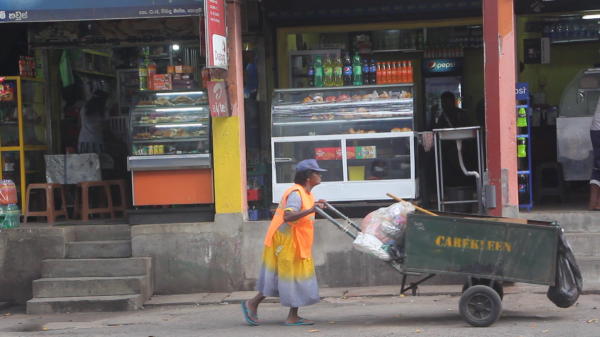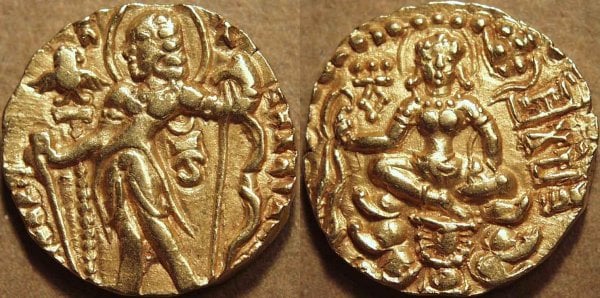
The following is the first of a two-part amusing insight into the myriad types of Lankans you’d find in Australia, by our very own Australia Correspondent, contributing writer Kelum Wijewardena.
Over the years, droves of Sri Lankans have migrated to Australia, making the land Down Under home to one of the largest Sri Lankan communities outside of you know where. However, if you speak to most Sri Lankan expats here, they will unanimously state that there is no better place on the planet than Mother Lanka. The food, the people, the culture – and even the political anarchy – makes for good theatre. As Jeremy Clarkson said, there’s no better drama than reality.
Conversely, most Sri Lankans living on in Lanka land have professed that they are dying to get out of the country. One could even say that there was a time when the most commonly used English letters among Lankan students in Australia was “PR.” Now it seems as if these two letters have made their way, perhaps by boat, to young Lankan professionals. The reasons for this are varied, but we guess it’s the Australian Summer Social Cricket Programme that has appealed to their fancy.
Therein lies the mystery of being Sri Lankan: one half dreaming of the island spell, while the other having nightmares about it.
With such a large community of expats, they have brought some truly unique nuances to Australia, and bottled seeni sambol isn’t one of them. While we may consider some of these as uniquely Sri lankan, a few South Asian friends would swear we are talking about their own countrymen.
1) The Mukunuwenna Expat

Alligator Weed: who would have thought these seemingly innocent green leaves could be the culprits behind a whole saga among Australia’s Sri Lankan community? Image Credit: blackwarriorriver.org
The mukunuwenna chapter was first documented on crazylanka.com and we thought it would be a good starter for this piece.
It’s not easy to leave your home and start afresh in a foreign land. In the off chance that you do, you try to find something that connects you to home. To most Sri Lankans who migrated to Australia in the ‘80s, this came in the form of mukunuwenna.
Mukunuwenna, the leafy green that grows almost everywhere in Lanka, but hardly finds its way to a dinner table unless you can’t afford Pizza Hut, became an overnight celebrity in Australia during the early ‘90s. This happened when an unsuspecting housewife came across the familiar looking herb growing in the backyard of a house in Australia. It didn’t take long for mukunuwenna to spread through the community like weeds. It started off on the dinner table, bringing back nostalgic memories of home, then it found its way into lunch boxes, and then to dinner parties among friends. Soon, such was the popularity of mukunuwenna, that it found its way not only into dinner dance buffets, but also to the weekly alms-giving at the local temple.
The mukunuwenna expat would proudly boast about how they managed to grow it themselves in their ‘veggie patch,’ implicitly saying in that high pitched voice that “we have mukunuwenna, and you don’t?” and therefore asserting superiority over those who struggle to grow it.
The story doesn’t have a happy ending, unfortunately, as an overzealous agricultural scientist by the name of Lalith identified the local variety of mukunuwenna for what it really was: alligator weed, a nasty weed full of heavy metals, and naturally, quite poisonous. All hell broke loose in the Sri Lankan community, and it was eventually the foresight of the agricultural scientist, and a certain Ministry, that brought order and the real variety of mukunuwenna. The scientist was aptly named Mukunuwenna Lalith by the community. Unfortunately, in fear of being poisoned, Buddhist monks refused to eat mukunuwenna or any other mallung at alms-givings. People stopped boasting about their veggie patches until someone cracked the code on growing karapincha.
When we first heard of this, we thought it was something out of the X-files. Later, however, we managed to validate its legitimacy, as Mukunuwenna Lalith happens to be a friend of a friend’s father. Quite the Sri Lankan Connection.
2) The Name Changer

Sri Lankans have notoriously long names. Image Credit: criclife.com
There’s a reason why Angelo Matthews is the Australian cricket commentators’ current favourite Sri Lankan cricketer – and unfortunately, it has little to do with his amazing cricketing skills. Angie is like the Goldberg Variation, in a country that boasts tongue twisters as Pragnarathna and Gnanarathna or long syllabled ones like Warnakurukulasooriya to the juggernaut of Amunugama Rajapakse Rajakaruna Abeykoon Panditha Wasalamudiyanse Ralahamilage Rajitha Krishantha Bandara Amunugama. In comparison, Angelo Matthews is like honey on their lips.
Long winded and complicated Sri Lankan names are world renowned, and Australia is no exception. These names are even harder for Aussies who are used to shortening the short. For instance, to the rest of the world the Melbourne Cricket Ground is the MCG, but to Aussies it’s simply the G. So it’s not uncommon for most foreigners making a home in Australia to have endured some sort of merriment at the expense of their names. A quick listen to the 12th man’s guide to pronouncing Pakistani cricketers’ names will confirm this. Now, whether it’s a ploy to fit in, or the sheer fatigue at having to always correct people, or in an attempt to simply get the girl, there is a subset of Sri Lankan expats who have westernised their Sri Lankan names.
This westernisation, which at times may have a distinct recipe like the malay pickle, is at other times as random as picking names from a hat. Here are a few examples: Kelum has become Kel or Kal (some instances Kal-el), Ruwan to Ron, Deshantha to Desh, and Hashantha to Hash. Very straightforward. Then there’s the Wickramanayake to Wicky, Jayammana to Jay and Gurusinghe to Grey. Some of the questionable ones, however, include Ruwantha to Jack, Yassas to Ash and our personal favourite: Siripala malli to Shane.
3) The Toyota Driver

The Toyota ‒ sadly, not as appreciated by Australians as it is by Lankans. Image Credit: scifleettoyota.com.au
Toyota vehicles are remarkably reliable, drearily boring, unquestionably affordable, and extremely efficient. However, in Aussie motoring circles, the name Toyota doesn’t gain you any street cred. In fact, you wouldn’t boast that you have a Toyota at all, unless you are driving a Hachi-Roku (AE86).
In Sri Lanka, however, driving a Toyota means that you are widely respected for your choice. A few sentences used to describe it here in the island would include “works petrol nicely (aney),” “very low cost to keep and no problems with the car (more aney).” As a Toyota aficionado, you are perceived as the wisest person in the village. This infectious love and respect to this brand has managed to cross seas and deserts and land in Australian suburbia. There are suburbs in Australia full of Sri Lankans, where you will find Toyota Camrys and Aurions (big brother to the Corolla), and the occasional diesel Land Cruisers parked in the driveways. You’ll be forgiven for thinking you’ve visited a Toyota employees’ housing scheme. Funnily enough, when asked why they chose a Toyota, the typical Sri Lankan expat reply is “look how much space I got for so little money (aney).”
4) The Rice Eater

We Sri Lankans love our rice and curry, no matter where we are. Image Credit: riceandcurry.wordpress.com
Growing up in Sri Lanka, rice was the staple food for breakfast, lunch and dinner… that is, when boiled mung ata wasn’t on the menu. Not a single meal went by without any form of rice in it. Our personal favourite is kiribath with a dash of raw brown sugar sprinkled on top. However, with the introduction of foreign franchise eateries such as McDonalds, KFC and, of course, Pizza Hut, all of a sudden, eating rice had became passé. Suddenly, rice wasn’t one of the cool kids any more. Locals started frequenting these places like they had been suffering from a prolonged famine. Kids stopped bringing banana leaf bath parcels to school, while dinner tables were graced with freshly baked pizzas and burgers. It suddenly became more fashionable to eat junk food, and the country embraced it.
So you would think that living outside the country would put you in a good place to become a citizen of the world and experience all types of cuisine. Funnily enough, this is not the case. It seems that the minute they step off the plane, some biological switch gets turned on, and Sri Lankans start craving and yearning for rice and curry. We have a few theories about this: perhaps the trauma of first tasting airplane food causes it, or maybe being in the tail end of the Southern hemisphere flips the brain like an omelette, or maybe you really don’t know what you’ll miss until you miss it. We remember a time when new university students were seen walking down the streets like zombies and vampires looking for rice and curry, while the established students would boast about how their parippu (dhal) curry was the best.
5) The Tax Evasion Expat

Tax evasion: an area of expertise for many a Lankan expat. Image Credit: theaimn.com
Sri Lanka, being a third world country, is heavily reliant on indirect taxes such as the infamous GST and VAT. Being a low income country, direct taxes such as income taxes form only a small portion of the Government’s tax income. Thus, most of us are not even aware of the obligation of doing a proper tax return. In developed countries, it’s a lot different. Income tax forms a big part of the system, prompting the famous expression “death and taxes.” Many a migrant learned the hard way that you need to follow certain set rules, like getting a tax file number and providing it to all income generating sources such as banks for savings accounts, all employers if holding multiple jobs, and Superannuation (Aussie version of EPF) funds. Otherwise, you not only end up paying half your income to the Government, but you also run the risk of being fined for any back taxes, or worse… being imprisoned (like Al Capone).
That was until the expats found out about the tax loopholes. In any system, there are loopholes: it’s just a matter of finding them. Some claim they found out about these from a man who had read a Jeffrey Archer short story, while others say an exceptional Sri Lankan accountant was told about it by an angel quite similar to Abou Ben Adhem’s. Regardless of the source, once they found out about them… exploited the loopholes they did. Just like flies at the local market.
First, it was the non-working (non-existent) spouse – all you needed was a name and a date of birth, and you could claim a tax offset. Then came the visiting parent rebate, charitable contribution deductions, laundry and uniform allowance, working from home, travelling from different work stations, work bag, shoes, coffee and cigarettes. Okay, the last two were made up, but you get the picture. They made an art form out of it.
Everything possible was claimed and they did it by paying their taxes themselves, cutting off the need for an accountant. Eventually, all expats (Lankans + non-Lankans) living in Australia were doing this, which prompted the Government to bring in new reforms and remove the allowance for unemployed spouses and visiting parents. Oh well.
6) The Tuition Expat

Most Lankans are as obsessed with tuition classes as they are with rice and curry (but not in a good way) Image Credit: movingimages.wordpress.com
Sri Lanka, for over half a century, has boasted (seems like we Lankans do a fair amount of boasting…) a free education system up to the tertiary level. The country also has schools and universities that are over a century old. Despite having a free, and an arguably decent, education system, we seem to be in love with the idea of private tuition.
Our simple theory on this is: humans value things based on explicit cost, and guess what? Free education doesn’t really cost a thing to its consumer. The other side of this is, in a competitive examination system, students, or rather, their parents, feel that tuition classes would give their children a much needed added advantage… or perhaps we really are a crazy bunch. Whatever the reason may be, we are really obsessed with private tuition. So much so that some students would go to their school teachers’ houses to pay for a lesson they can learn from the same teacher at school for free. Sometimes we should question our genetic makeup, as certain behaviours seem to be hard wired, regardless of their practicality.
Not so surprisingly, this obsession has found its way halfway across the world. Sending children to tuition classes is a new found fad among expat parents in Australia. All in an effort to ensure their child becomes a Doctor or an Engineer.
The tuition frenzy may have also been fuelled by newly arriving graduate expats smuggling in the idea that tuition classes will help you over-achieve. This creates a paradox: they go because it’s there, it’s there because they go. Some tuition classes charge up to AUD 60 – 100 per hour, and we even know a few parents who drive about 45 minutes (30 kilometres), to send their kids to a certain class. Either way, just like in the motherland, tuition classes have become a big business in Australia. In addition, they also have the added advantage of being a tax free income to the tuition master.
Coming up – the Lankan Cricket Connoisseur, the Kandos Man, and more interesting Lankan specimens from Down Under. Watch out for Part 2 next week!







